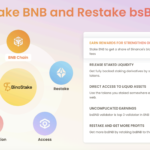Japanese Philosophy of “Shokuiku” Promotes Healthy Eating Habits in Children, Resulting in Healthiest Kids
In 1896, Dr. Sagen Ishizuka introduced the concept of “shokuiku,” a Japanese philosophy focused on teaching children about food and its impact on the mind and body. This philosophy has become deeply ingrained in Japanese culture and is a significant factor in why Japanese children are considered some of the healthiest in the world.
According to a report by UNICEF, Japan is the only developed country among the European Union and the OECD where fewer than one in five children are overweight. This highlights the success of the shokuiku philosophy in promoting healthy eating habits among Japanese children.
So, what exactly do Japanese parents do differently that contributes to raising happy and adventurous eaters? Here are some key practices:
1. Early Implementation of Shokuiku:
Japanese doctors often advise expectant mothers to follow a balanced meal style called “ichijū-sansai.” This style emphasizes a bowl of rice and miso soup as the center of the meal, accompanied by a protein dish and two vegetable sides for essential nutrients and fiber. As children grow older, they learn more about healthy eating habits, with the government passing the Basic Act on Shokuiku in 2005 to promote shokuiku. Preschools involve children in harvesting vegetables, while elementary schools educate students about the farms that produce their food.
2. Bento Box Conversations:
Over 95% of Japanese elementary and junior high schools have a school lunch system planned by nutritionists. However, homemade bento lunches also play a vital role in promoting shokuiku. Teachers encourage students to talk about what’s in each other’s bento boxes, making lunchtime enjoyable and fostering a willingness to try new foods. Opting for bento lunches allows children to have consistent access to seasonal vegetables and fruits, while avoiding high-fat food and additives. Meals often feature local, fresh ingredients, such as baked cod with sweet corn and bok choy, served with minestrone soup and milk.
3. Batch Cooking Nutrient-Rich Foods:
Parents simplify their everyday cooking by preparing simple homemade pickles and freezing nutritious vegetables and fruits in batches. This ensures the availability of nutrient-rich lunches even when fresh produce is limited. By following this practice, parents can adhere to school rules that prohibit high-sugar or high-fat snacks and caffeine.
4. Choosing Water or Tea over Soda:
Japanese parents encourage their children to drink water or tea instead of sugary sodas. Barley tea, a mineral-rich and caffeine-free beverage, is a popular choice among all age groups. It serves as a healthier alternative to sweetened teas and bottled drinks. Additionally, parents involve their children in making smoothies using fresh fruit and yogurt, discussing how the fruit grows and its origin. These experiences instill healthy eating habits in children that can last a lifetime.
The success of shokuiku in promoting healthy eating habits and raising healthy children is evident in Japan. By implementing these practices, Japanese parents raise happy and adventurous eaters who understand the connection between food, their bodies, and the environment.

I have over 10 years of experience in the cryptocurrency industry and I have been on the list of the top authors on LinkedIn for the past 5 years. I have a wealth of knowledge to share with my readers, and my goal is to help them navigate the ever-changing world of cryptocurrencies.











